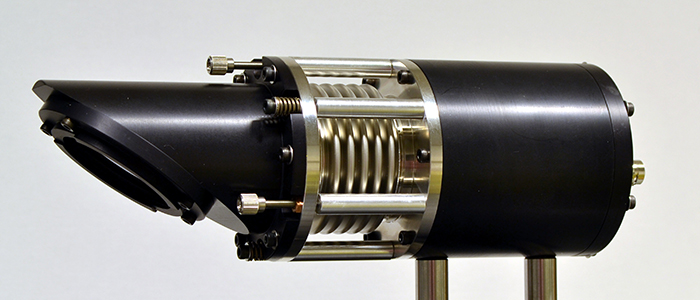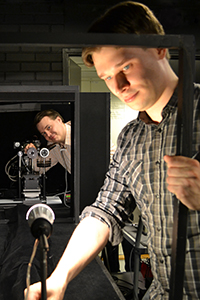The method helps discovering the most efficient lamps, which may save billions in lighting costs in the future.
 |
|
PQED consists of a Brewster window (left) protecting the detector elements from impurities, adjustable bellows and the detector chamber itself. In order to further decrease uncertainties in measurement, the window was removed and the detector was protected from impurities using nitrogen flow. (All photos courtesy of Aalto University and VTT Technical Research Center) |
Researchers at Aalto University and VTT Technical Research Center of Finland have succeeded in developing a method which helps to improve the relative uncertainty in measuring the luminous efficacy of LEDs from the approximate 5% of today to one per cent in the future. The results were just published in the distinguished Light: Science & Applications journal.
– Thus far, solutions based on incandescent lamps have been used in photometry, i.e. in measuring light detected by the human eye, explains Tomi Pulli, a doctoral student at Aalto University.
– The photometers that lamp manufacturers use for calibrating their devices have been produced and calibrated for incandescent lamps, which results in errors when measuring the efficacy of LEDs. In our research, we used a LED lamp with a well-defined spectrum and a PQED detector, which we developed together with VTT MIKES Metrology and European partners, and whose spectral responsivity can be determined highly accurately. Therefore, there was no need for the problematic optical filters used in applications based on incandescent lamps. Indeed, accurately determining and analysing the spectrum of the LED was the most challenging and crucial part of the research, he reveals.
 |
|
Doctoral students Timo Dönsberg (back) and Tomi Pulli measuring the illuminance of LEDs. |
From a dot to a sphere
The detector used in measurements by Pulli and his co-researchers measures the illuminance of LEDs in a very small area. According to Professor Erkki Ikonen, the head of research, the next step will be to move onto measurements corresponding to real-life conditions for lighting.
– LED lamps emit light to all directions. In order to measure the luminous efficacy, we thus use a device called an integrated sphere, which takes into account light coming from different directions, he specifies and reminds us that the history of LEDs is still short when compared to incandescent and fluorescent lamps. Therefore, there is still little information available on their actual efficacy and ageing properties. Indeed, it is essential to determine luminous efficacy as accurately as possible so that such lamps can be introduced in the market that transform as much electrical energy into light useful to the human eye as possible.
– So far, the portion of LEDs has been merely around ten per cent globally, but the amount is increasing at a rapid pace, Ikonen explains.
– Lighting amounts to approximately 20% of the electricity consumption in the world. Once the share of LEDs increases close to 50%, an improvement of as little as one percent in the accuracy of measuring the luminous efficacy of the lamps introduced in the market will mean saving billions of euros each year.













